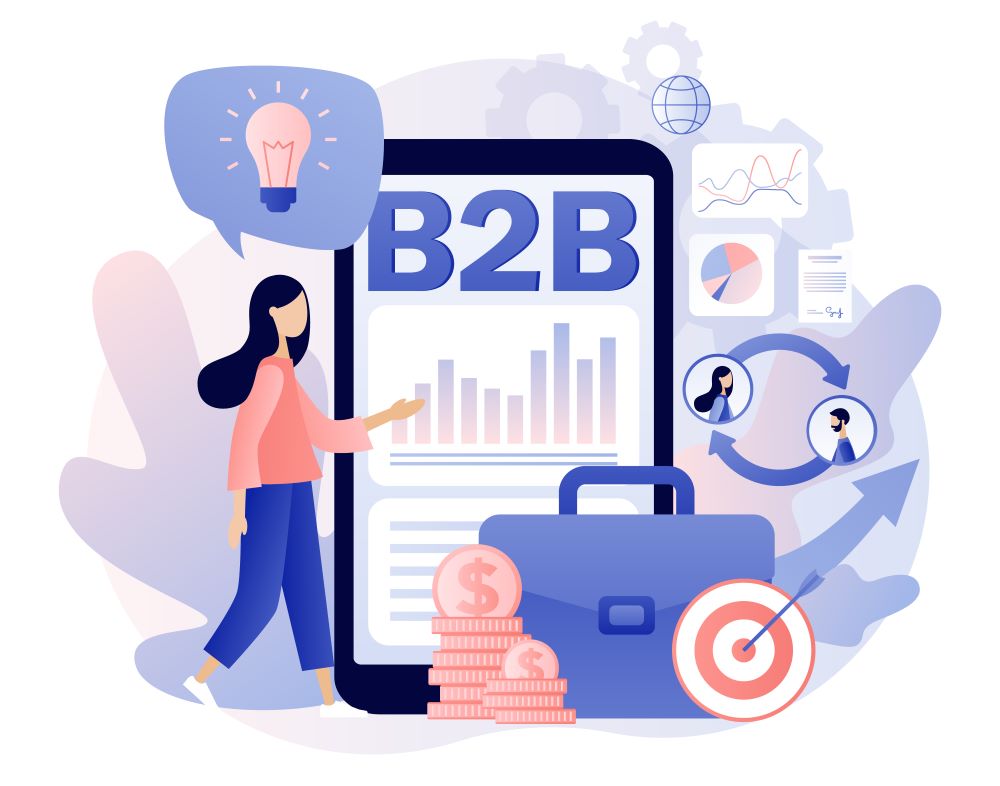Mastering B2B Data Quality for Better Decision-Making
“Data quality is not an act but a habit; it’s the small details that ultimately shape the success or failure of a business.”
– Aristotle
Businesses are faced with a huge amount of data from several sources and channels in the current digital era. But among all of this information, B2B data stands out as a source of opportunity and insight.
Important information on companies and their dealings is included in B2B data, which forms the basis for well-informed decision-making.
B2B data offers a complete overview of the market environment, ranging from contact information and firmographics to technographics and intent indications.
Its relevance stems from its capacity to provide insights that may be put to use, directing strategic decisions and igniting growth efforts.
Businesses may acquire a competitive edge and become more skilled at navigating market dynamics with accuracy and agility by understanding the quality of B2B data.
Organizations may steer towards success in an increasingly data-driven environment by using B2B data to improve marketing campaigns, sales tactics, and risk mitigation.
What is B2B data?
B2B data includes information on the relationships, exchanges, and transactions that take place between businesses as opposed to those that include consumers.
For businesses that offer goods or services to other businesses, this information is essential because it helps them discover new clients, comprehend their target market, and successfully customize their marketing and sales strategies.
B2B data often consists of specifics like firm names, industry classifications, the contact details of important decision-makers, purchasing patterns, historical transaction history, and any other pertinent business-related data.
In addition, it could include firmographics, technographics, behavioral insights, and demographic data that assist companies in segmenting their target market and customizing their marketing approaches.
For companies trying to create leads, form alliances, find markets, and streamline their sales procedures, access to reliable and current B2B data is crucial.
To collect, arrange, and make use of this crucial data, organizations regularly invest money in databases, analytics tools, and B2B data services.
5 Types of essential B2B data
1# Contact data
This comprises details on specific people within companies, such as their names, job titles, phone numbers, and email addresses.
2# Technographic data
Technographic information gives insights into the IT architecture and preferences of companies by exposing the technologies and tools they employ.
3# Firmographic data
Firmographic data includes specifics about the enterprises themselves, like revenue, size, location, and industry.
4# Demand generation data
This kind of data helps companies find possible leads or possibilities by indicating the degree of interest or demand for goods or services.
5# Intent data
Intent data shows how organizations behave and act online, giving insight into their preferences and level of interest in particular goods or services.
What are the 5 techniques to ensure high-quality B2B data?
1# Data Cleansing
Data cleansing is the process of finding and fixing errors, inconsistencies, and redundancies in databases. It is often referred to as data scrubbing or data cleaning. This method guarantees that the data will always be correct, comprehensive, and trustworthy.
Typical duties in data cleaning include:
Eliminating duplicate entries:
Duplicate entries waste resources and distort analysis. Businesses protect their dataset integrity by finding and removing duplicates.
Fixing errors:
Misspellings, typos, and improper formatting are examples of faults that can lower the quality of data. To ensure accuracy, data cleaning entails locating and fixing these mistakes.
Managing missing values:
Analyses that contain missing data points may be distorted and result in incorrect findings. Imputation techniques are used in data cleaning to approximate missing values and mark incomplete information for additional study.
2# Standardization
Data management procedures are streamlined, and consistency between heterogeneous datasets is made easier by standardizing data formats and structures. This entails creating standardized norms for names, addresses, and other characteristics, among other data components.
Important aspects of standardization consist of:
Creating data conventions:
To guarantee consistency across datasets, provide common formats and encoding procedures.
Normalizing data:
Data normalization involves putting material into a uniform format, such as standardizing units of measurement or putting dates in a standard format.
Data validation:
Put validation guidelines into practice to uphold data standards, identify departures from accepted practices, and highlight discrepancies that require correction.
3# Enrichment
The process of improving already-existing datasets by adding new information from outside sources is known as data enrichment. Richer context and insights are produced by this process, which also broadens and deepens the data.
Methods for enhancing data consist of:
Adding external data:
To enhance current data with new characteristics or variables, including datasets from outside sources or external datasets.
Improving the quality of data:
By filling in the blanks in already-existing datasets, enrichment can increase accuracy and completeness.
Contextualizing information:
Organizations may get a deeper understanding of their clients, markets, and trends by incorporating external data sources such as demographic data, market research reports, and social media analytics through enrichment.
4# Regular Updates
Since B2B data is dynamic, it might alter over time. To guarantee that data is accurate, up-to-date, and relevant, regular updates are necessary.
This involves putting procedures in place to:
Monitor data quality:
Establish monitoring systems to keep an eye on the consistency and quality of data over
time, noting any irregularities or deviations that need to be reviewed.
Updates to the schedule:
Establish frequent update periods for data, accounting for variables including industry developments, regulatory changes, and data volatility.
Implement data refresh cycles:
Refresh datasets frequently to integrate new information and reflect changes in the business environment.
5# Data Governance
Data governance encompasses the active structuring of procedures, guidelines, and controls regulating data usage, management, and security within an organization. Ensuring data security, quality, and integrity requires effective data governance.
Important elements of data governance consist of:
Creating data policies:
Clearly define the roles, duties, and accountability for data management in explicit rules and procedures.
Putting in place controls for data quality:
Implement quality assurance strategies to keep an eye on data quality, uphold standards, and quickly resolve problems.
Maintaining compliance:
To reduce risks and protect sensitive data, make sure data governance procedures are in line with industry norms and legal requirements.
How can B2B data be used for better decision-making?
1# Market Segmentation
Businesses may efficiently segment their market by finding the important attributes and features of various consumer groups using B2B data.
Businesses may customize their marketing tactics and offerings to each segment’s unique requirements and preferences by examining demographic, firmographic, and behavioral data.
A software company, for instance, can utilize B2B data to pinpoint organizations or sectors that are most likely to require their product, and then create campaigns and content specifically designed to appeal to those segments.
2# Sales Prospecting
Sales teams may discover and prioritize leads with great benefit from using B2B data. Sales personnel may concentrate their efforts on prospects who are most likely to convert by using data on business size, industry, revenue, previous purchases, and other important aspects.
This will increase their efficiency and productivity. Using advanced analytics and predictive modeling enhances sales prospecting, and recognizing buying signals.
3# Customer Relationship Management (CRM)
B2B data is essential for fostering and preserving client connections. Businesses may obtain a thorough understanding of every customer by centralizing customer data into a CRM system, which includes prior interactions, purchase history, preferences, and pain areas.
This fosters better and more valuable connections by enabling more individualized and targeted communication, proactive customer assistance, and specialized solutions.
4# Risk Mitigation
Utilize B2B data to mitigate concerns regarding credit, fraud, and supplier reliability.
Businesses can evaluate the creditworthiness of prospective clients and suppliers, spot early warning signs of financial distress, and make well-informed decisions to reduce the risk of non-payment or supply chain disruptions by examining financial data, credit scores, payment histories, and other related metrics.
5# Product Development
B2B data offers insightful information on market demands, patterns, and preferences that may help direct and inform efforts to build new products.
Businesses may find chances for innovation, improve current goods or services, and create new offers that appeal to target customers by examining input from current customers, keeping an eye on competitor activity, and recognizing rising market demands.
Furthermore, B2B data may assist in ranking features and functions according to consumers’ perceived value and relevance, guaranteeing efficient use of limited resources.
Conclusion
Companies hoping to obtain a competitive edge in the current industry must grasp B2B data quality. Businesses can make sure that their B2B data is accurate, relevant, and dependable by putting strategies like data cleansing, standardization, enrichment, frequent updates, and data governance into practice.
Businesses may make wise decisions in a variety of areas, from customer relationship management and risk reduction to marketing and sales, by utilizing high-quality B2B data.
Companies that leverage B2B data will be more capable of navigating the intricacies of today’s business environment and nurturing long-term success and growth.




